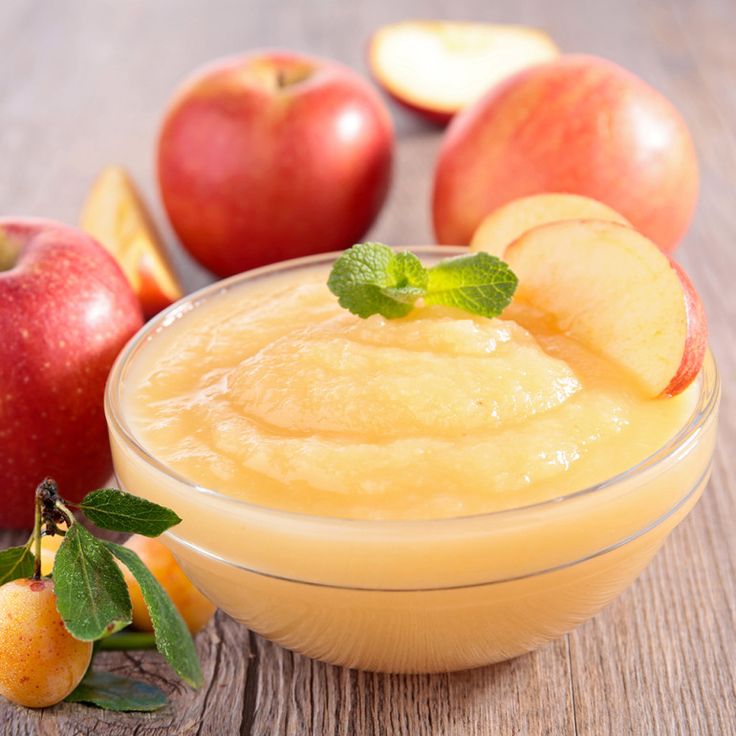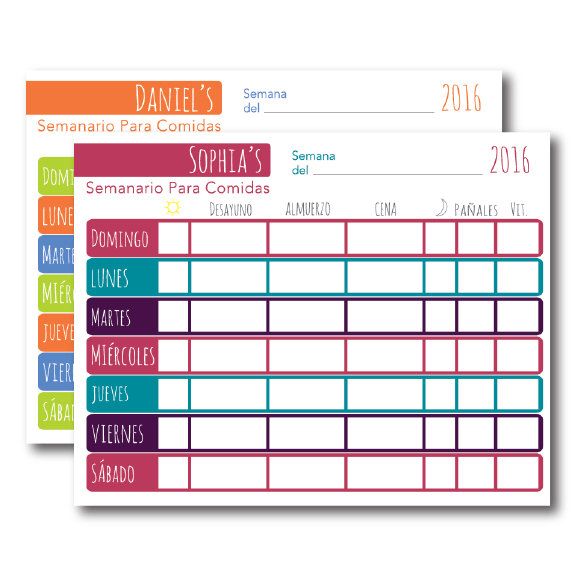High fiber baby food recipes
30 High Fiber Foods for Babies and Toddlers to Feed Your Baby the Right Way
Fiber is an important nutrient that keeps our digestive system running smoothly. Here are the top healthy High Fiber Foods for Babies and Toddlers.
What is Fiber?
Health Benefits of High Fiber Foods:
30 High Fiber Foods for Babies and Toddlers
1. Oatmeal
2. Whole Grain Cereal
3. Apples
4. Pears
6. Avocado
7. Mango
8. Pineapple
9. Prunes
10. Nuts Powder
11. Carrots
12. Beetroot
13. Sweet potatoes
14. Green Peas
15. Beans
16. Leafy Greens
17. Broccoli
18. Yogurt
20. Millet
21. Berries
22. Whole-grain Bread
23. Whole-grain Pasta
24. Brown Rice
25. Barley
26. Whole Grain Cereal
27. Dried Beans
28. Pomegranate seeds
29. Corn
30. Nuts and Seeds
Frequently Asked Questions
What baby foods have the most fiber?
How can I add more fiber to my baby’s diet?
Buy Healthy Nutritious Baby, Toddler food made by our own Doctor Mom !
As parents, we try our best to plan our kids meals so they get all the nutrients they need.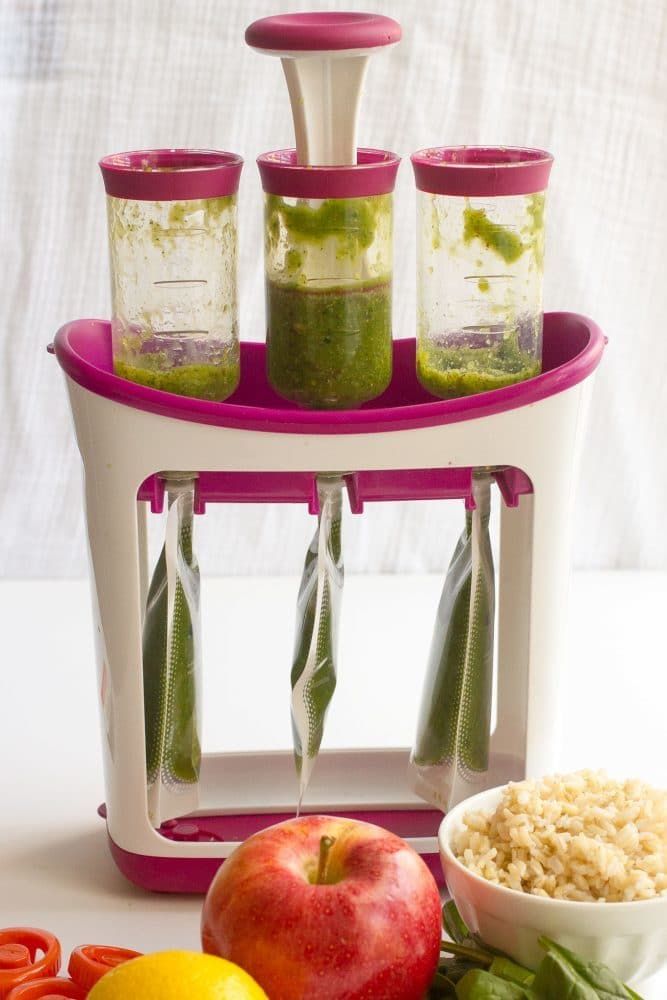 We focus a lot on protein, iron, calcium and healthy fats. However, one thing that often gets missed out is this – fiber. Experts across the board say that for all a healthy digestive system, you need three things – fiber, fluids and fitness. Remove any one of this and you’re in for some trouble – especially in the bathroom!
We focus a lot on protein, iron, calcium and healthy fats. However, one thing that often gets missed out is this – fiber. Experts across the board say that for all a healthy digestive system, you need three things – fiber, fluids and fitness. Remove any one of this and you’re in for some trouble – especially in the bathroom!
What is Fiber?
Fiber is the undigestible part of the plant-based food we eat, like fruits, vegetables, legumes and grains. There are two types of fiber – soluble and insoluble.
- Soluble Fiber can dissolve in water. It slows down digestion, making us feel fuller for longer. Soluble fiber is found in oats, barley, fruits and legumes like beans or peas.
- Insoluble fiber does not dissolve in water. It adds bulk to stool and pushes it through the digestive system, easing elimination from the body. Insoluble fiber is found in wheat bran and grains.
Both kinds of fiber are important for a healthy digestive system. Along with the right amount of water, it ensures easy and regular movements, while also promoting better absorption of nutrients.
Every person needs 14 grams of fiber for every 1000 calories they consume in a day. For babies, this translates to about 55 to 110 grams of soft cooked high fiber vegetables a day. For older children, this can be broken down as:
- Toddlers (1-3 years old) – 19 grams of fiber a day
- Young Children (4-8 years old) – 25 grams of fiber a day
- Older girls and teens (9-18 years old) – 26 grams of fiber a day
- Older boys (9-13 years old) – 31 grams of fiber a day
- Teen boys (14-18 years old) – 38 grams of fiber a day
If this is hard to remember, a rule of thumb is to add 10 to the child’s age (for children 5 and above). For example a 9 year old would need 19 grams of fiber a day. Ensuring 5 servings of fruits and vegetables a day also helps.
Health Benefits of High Fiber Foods:
- Keeps the digestive system working properly
- Prevents and treats constipation
- Is filling and doesn’t make the child hungry soon
- Prevents overeating and obesity
- Prevents diabetes
- Lowers bad cholesterol
- Prevents heart disease
- Lowers the risk of cancer
- Ensures absorption of nutrients
Besides these benefits, eating high fiber foods for babies and toddlers also prevents nutritional deficiencies, since most fiber-rich foods are rich in minerals vitamins and antioxidants. On the other hand, not having enough fiber can lead to several problems:
On the other hand, not having enough fiber can lead to several problems:
- Firm, hard and dry stools
- Infrequent bowel movements
- Crying when trying to pass stools
- Unwillingness to go to the toilet
- Hard and swollen abdomen
- Abdominal pain
- Low appetite
- Bleeding while pass
In severe cases, this can cause stool retention and impaction with stool leakage.
These problems can be fixed with a diet rich in high fiber foods, sufficient water intake and physical activity. A food is considered a high fiber food if it has at least 3-5 grams per serving. It can be heard to go around calculating the individual fiber content of each food, so we’ve rounded up the top high fiber foods for babies and toddler.
30 High Fiber Foods for Babies and Toddlers
List of high fiber foods for babies and toddlers
1.
OatmealOatmeal is one of the easiest ways to increase the fiber in your little one’s diet. Even babies over 6 months can have oatmeal, and it with 4 grams of fiber in a cup of cooked oatmeal, it’s an excellent choice for school going kids too! Go for organic oatmeal to get added health benefits. Try these recipes with oats for your baby:
Even babies over 6 months can have oatmeal, and it with 4 grams of fiber in a cup of cooked oatmeal, it’s an excellent choice for school going kids too! Go for organic oatmeal to get added health benefits. Try these recipes with oats for your baby:
- Organic Oats Porridge
- Banana Oats Cereal
- Oats Khichdi
- Curd Oats Khichdi
For older kids, try these:
- Oats Egg Custard
- Banana Coconut Oats Porridge
- Carrot Oats Muffins
You can find many more healthy recipes in our list of oats recipes for babies and toddlers.
2. Whole Grain Cereal
Baby cereal is a big part of a baby’s diet for the first year, so make sure you choose a cereal that’s high in fiber. Brown rice cereal, barley cereal or oats cereal are all good options. You can also try these recipes:
- Homemade Brown Rice Cereal
- Homemade Barley Cereal
- Banana Makhana Cereal
You can also make many other dishes with baby cereal, for both babies and older kids.
3. Apples
Apples are what most Moms opt for as the first fruit to feed their babies. They’re naturally sweet, easy to digest and have 3.6 grams of fiber in a small apple. With loads of benefits, apples are an excellent choice, especially when fed with the peel on for older kids. For babies, you can try these recipes:
- Apple and Cottage Cheese Puree
- Broken Wheat Apple Halwa
- Apple Ragi Porridge
Older kids will enjoy these:
- Quinoa Apple Porridge
- Apple Protein Milkshake
- Apple Whole Wheat Pancakes
You can also check out our list of healthy apple recipes for babies under one.
4.
PearsJust like apples, pears are sweet juicy and rich in fiber. A medium pair provides 5.5 grams of fiber, provided it has its skin on. Pears are also easy to feed babies and are easy to digest. You can try these pear recipes for your baby:
- Pear Puree
- Apple Pear Cinnamon Puree
5. Bananas
Bananas
Bananas – the most preferred way of sweetening baby food without sugar! A medium banana packs 3.1 grams of fiber, making it one of the easiest ways of increasing your child’s fiber intake. From babies to teens, a banana is the ideal travel snack too. Try out these banana recipes for your baby:
- Banana Ghee Fry
- Strawberry Banana Puree
- Kiwi Banana Puree
- Ragi Banana Halwa
For older kids, you can try these:
- Banana Oats Pancakes
- Banana Omelette Recipe
- Barnyard Millet Banana Bread
All bananas have fiber, and raw Kerala bananas help babies gain weight too. Check out our list of healthy Kerala banana recipes.
6. Avocado
This creamy delicious fruit finds place in many recipes ranging from sweet to savory. It’s touted as a health food the world over and with good reason – half a cup of avocado has 5 full grams of fiber. Besides, they’re also rich in heart healthy fats. The creaminess of the fruit makes avocado ideal for babies, especially in recipes like avocado puree.
The creaminess of the fruit makes avocado ideal for babies, especially in recipes like avocado puree.
7. Mango
Mango, the king of fruits, is one of those things that kids readily eat, thanks to its juiciness and sweetness. But mango isn’t all about the taste, it’s got loads of fiber too, at nearly 3 grams a cup. While babies can munch on mango slices as finger food, you can also try these recipes:
- Easy Mango Yogurt
- Mango Puree
- Mango Cucumber Soup
Old kids will enjoy mango in these recipes:
- Mango Dates Smoothie
- Homemade Mango Kulfi
- Mango Frooti Concentrate
For more recipe ideas, check out our list of healthy mango recipes for babies and kids.
8. Pineapple
The spiky tropical fruit can be fed to babies too! On their own pineapple slices make great teething rings, especially when they’re frozen. What’s more, a cup of pineapple chunks have 2.3 grams of fiber. Besides raw pineapple, you can also try these for your baby:
- Pineapple Carrot Puree
- Pineapple Kesari
Older kids will enjoy an upside down pineapple cake as a healthy afternoon snack!
9.
 Prunes
PrunesPrunes are the number one natural remedy for constipation, and it’s understandable – with 3 grams of fiber in just quarter of a cup, this is a fiber super food! Even little babies can have prunes, both as prevention and treatment for constipation.
10. Nuts Powder
All kinds of nuts are rich sources of fiber and loads of other nutrients including healthy fats. However, nuts can prove to be a choking hazard for babies and young kids, so nuts powder is the best option. You can try either of these:
- Dry Fruits Powder
- Mixed Nuts Powder
This powder can be mixed into any recipe – it’ll only taste more delicious!
11.
CarrotsCarrots are the apples of vegetables; they’re most babies’ first veggie! Not surprising, since carrots are rich in Vitamins A and C, and also have 2.9 grams of fiber in every half cup. Carrot sticks can also be steamed and offered as finger foods. Babies will love these carrot recipes:
- Carrot Puree
- Carrot Oats Porridge
- Carrot Poha Kheer
Older children will enjoy these carrot recipes:
- Egg Carrot Chapathi Roll
- Spiced Carrot Walnut Muffins
- Carrot Cheese Paratha
12.
 Beetroot
BeetrootBeetroots are something many children will eat if presented well, since the color itself is so attractive. Not only that, beets are packed with iron, potassium and manganese, as well as a royal 3.8 g in a cup. Try out these beetroot recipes for babies:
- Carrot Beetroot Soup
- Beetroot Chickpea Puree
- Beetroot Pearl Millet Porridge
- Beetroot Potato Pure
- Beetroot Halwa
For older kids, you can try these beetroot recipes:
- Beetroot Burger
- Beetroot Paratha
- Beetroot Rolls
- Beet Applesauce Dip
13.
Sweet potatoesPotatoes may be popular, but many of us don’t realize that sweet potatoes are just as good, maybe even better! Along with Vitamins A and C, sweet potatoes provide us with 3.8 grams of fiber per medium sweet potato. The simplest way to feed this to babies is with a sweet potato puree. Older kids will enjoy these recipes:
- Sweet Potato Dosa
- Sweet Potato Fries
- Sweet Potato Bruschetta
 Green Peas
Green PeasGreen peas are one of the most versatile vegetables available – you can easily add them to stews, soups, purees and much more! Green peas are a great source of protein, and half a cup of cooked green peas provides 4.4 grams of fiber. Babies can have peas in these recipes:
- Green Peas and Potato Puree
- Buttered Green Pea Mash
Older kids can enjoy green peas as part of these recipes:
- Quinoa Vegetable Upma
- Tofu Bhurji
Green beans are easily available, packed with nutrients and also a huge amount of fiber. Half a cup of beans contains a whopping 6-9 grams of fiber, making this a must have in your child’s diet. Babies will enjoy green beans in these recipes:
- Green Beans Puree
- Green Beans as Finger Food
16. Leafy Greens
Leafy greens are always included as part of a healthy diet, and we know that they contain loads of vitamins and iron. But did you know that greens like spinach and turnip greens also contain lots of fiber? One cup of cooked spinach contains 4.3 grams of fiber, while a cup of cooked turnip greens contains a good 5 grams! You can give your baby spinach with these recipes:
But did you know that greens like spinach and turnip greens also contain lots of fiber? One cup of cooked spinach contains 4.3 grams of fiber, while a cup of cooked turnip greens contains a good 5 grams! You can give your baby spinach with these recipes:
- Carrot Palak Puree
- Spinach Oat Pancakes
Older kids will love seeing the beautiful green color in these recipes:
- Creamy Spinach Soup
- Spinach Phulka
- Spinach Fritters
- Palak Poha Pakoda
Don’t forget to check out our list of healthy spinach recipes for babies and kids.
17. Broccoli
Broccoli isn’t something most kids eat readily, but there are ways to get kids to like broccoli. And it’s worth the effort too, considering one cup of cooked broccoli contains 5.1 grams of fiber. Broccoli can be given to babies but may cause excess gas, so introduce slowly and in small quantities, with these recipes:
- Broccoli Spinach Puree
- Broccoli Butter Puree
Older kids can try a broccoli mushroom soup. You can also check out our list on healthy broccoli recipes for babies and kids.
You can also check out our list on healthy broccoli recipes for babies and kids.
18. Yogurt
Yogurt isn’t exactly a high fiber food, but it deserves a place in this list because it contains probiotics and is crucial for a healthy gut and healthy digestion overall. Try these yogurt recipes for babies:
- Homemade Curd
- Homemade Strawberry Yogurt
- Homemade Mango Yogurt
- Coriander Curd Khichdi
- Turmeric Buttermilk
There are many ways to include yogurt in older kids’ food, like these recipes:
- Gopalkala
- Chocolate Yogurt Parfait
- Frozen Yogurt Bark
- Yogurt Fruit Parfait
- Curd Fritters
- Tricolor Fruit Parfait
- Flaxseed
Flax seeds are available in most supermarkets these days and are incredibly versatile since they can be added to anything. What’s more, a tablespoon of flax seeds contains 3 grams of fiber. For little ones, you can grind flax seed at home and sprinkle over their cooked food or into batter or dough before cooking. You can also add it to smoothies and soups.
For little ones, you can grind flax seed at home and sprinkle over their cooked food or into batter or dough before cooking. You can also add it to smoothies and soups.
20. Millet
Our grandmothers probably knew a thing or two about fiber, which is probably why millet featured so much among our traditional dishes! A 100 gram serving of millet contains a big 9 grams of fiber! And since millet can be given to babies, there are many recipes you can try:
- Multi Millet Porridge
- Beetroot Pearl Millet Porridge
- Little Millet Porridge
Older kids will love these recipes made with millet:
- Millet Kheer
- Multi Millet Paneer Paratha
- Barnyard Millet Vegetable Salad
- Millet Sathumaavu Laddu
- Pearl Millet and Green Gram Pesarattu
- Whole Grain Multi Millet Pancakes
You can get 100% natural millet preparations like Sprouted Finger Millet Flour, Millet Sathumaavu Health Mix, Organic Millet Dosa Mix, Foxtail Millet Noodles and Barnyard Millet Noodles.
21. Berries
Berries are pretty, and that may be one reason kids love them! But berries are also high in fiber, with raspberries topping the list at 4 grams in every half cup. Blueberries have 1.8 grams per half cup and strawberries have 1.5 grams fiber for half a cup. Babies will love a strawberry banana puree, while kids will love these recipes:
- Strawberry Cookies
- Strawberry Lassi
- Strawberry Banana Pancakes
- Strawberry Yogurt Muffins
You can also check out our list of healthy strawberry recipes for babies and kids.
(The foods in the list below are suitable for Children over One Year)
22. Whole-grain BreadWhite bread is made with grain that has the bran removed, which means no fiber. However, whole grain bread includes the bran and has about 2 grams of fiber a slice. So a sandwich with two slices gives you 4 grams! Here are a few recipes to try with whole grain bread:
- Homemade Whole Wheat Bread
- Hung Curd Sandwich
- Tricolor Sandwich
- Crispy Coconut Chutney Sandwich
- Paneer Sandwich
- Tricolor Bread Sushi Rolls
- Easy Bread Rolls
- Banana Coconut French Toast
23.
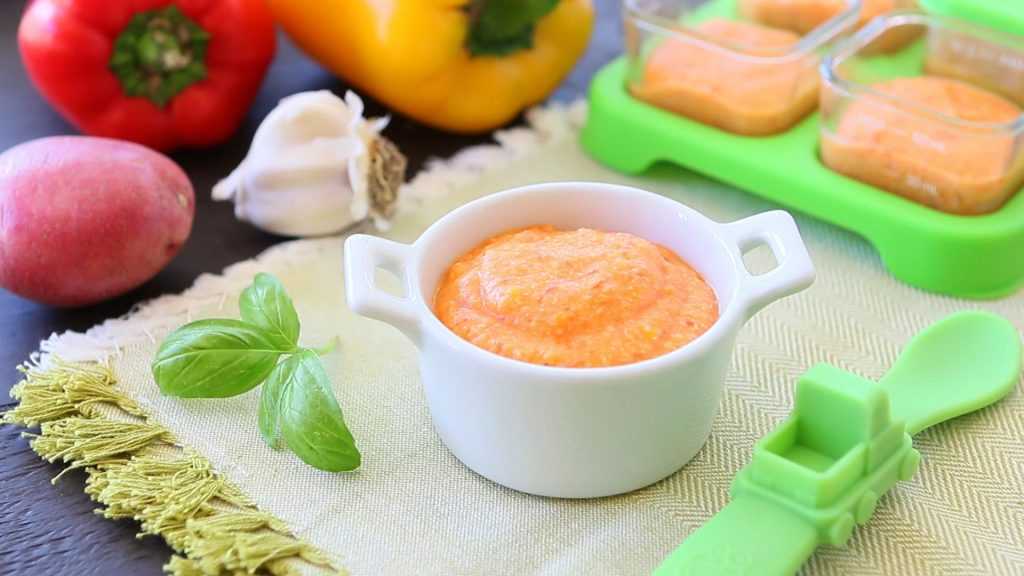 Whole-grain Pasta
Whole-grain PastaJust like whole grain bread, now whole wheat pasta is also becoming increasingly available. Half a cup of cooked whole wheat pasta has 2 grams of fiber and what’s more, it is more filling than regular pasta. Combine with other high fiber veggies and you have a meal! Check out these pasta recipes for kids:
- Minestrone Soup with Pasta
- Creamy Vegetable Pasta
- Vegetable Pasta Recipe
- Indian Style Macaroni
Besides pasta, you can also check out our range of 100% natural noodles made of whole grains and millet.
24. Brown Rice
White rice has the outer covering removed, which is why it is not as filling as brown rice. A cup of brown rice has a decent 3.5 grams of fiber, and goes great with all other ingredients from vegetables to chicken! Check out these brown rice recipes for kids:
- Okra Rice
- Paneer Vegetable Fried Rice
- Coriander Vegetable Rice
- Bell Pepper Fried Rice
- Vegetable and Soya Chunks Rice
- Brown Rice Flakes Kheer
- Brown Rice Poha
- Brown Rice Cutlets
- Coconut Rice
25.
 Barley
BarleyBarley has got to be the Superman of high fiber foods. With an incredible 32 grams of fiber in a cup of hulled barley, it’ll easily help taking care of your fiber needs for the day! Barley can be used in many ways, as you’ll find in our list of barley recipes for babies and kids.
26. Whole Grain Cereal
Cereal is one of the easiest things to feed kids for breakfast. After all, the only thing you need to do is serve with some milk! However, store bought cereals are notorious for being high in sugar and low on fiber. You can easily fix this with homemade cereal, which has about 9 grams of fiber in a ½ cup serving. Here are some options to try:
- Chocolate Muesli
- Fruit and Nut Granola
- Maize Flakes with Milk and Honey
27. Dried Beans
Dried beans tackle two common nutritional deficiencies in Indian kids – protein and fiber. Legumes like rajma and chana have 12-16 grams of fiber per serving, and they’re incredibly filling too! Here are some recipes you can try out with dried beans:
- Rajma Dosa
- Sprouted Moth Beans Frankie
- Rajma Veggie Quesadillas
- Rajma Sandwich
- Healthy Kidney Bean Soup
- Kid-friendly Chicken Chilli
- Chickpea Veggie Pancakes
- Roasted Chickpeas
Remember, sprouting dried beans multiplies their benefits manifold, by making their nutrients more bio-available.
Pomegranate seeds look like little jewels, and they certainly are, in terms of nutrition! These little red seeds have 3 grams of fiber in just half a cup and kids love them because of that burst of sweetness they have. Babies can try a pomegranate juice, while kids can enjoy these recipes:
- Eggless Apple Cake with Pomegranate
- Sugar Free Fruit Custard
- Sathumaavu Dahi Papdi Chaat
- Maize Flakes with Milk and Honey
- Homemade Constipation Juice
29. Corn
Corn is a popular dish with kids, probably because it is often associated with vacations and trips outside. It is one of those indulgences that are actually healthy! Half a cup of cooked corn has 1.8 grams of fiber. Here are some simple recipes to try with corn:
- Sweet Corn Fritters
- Baby Corn Fritters
- Sweet Corn Vegetable Soup
- Sweet Corn Fried Rice
- Sweet Corn Salad
- Cheese Corn Balls
30.
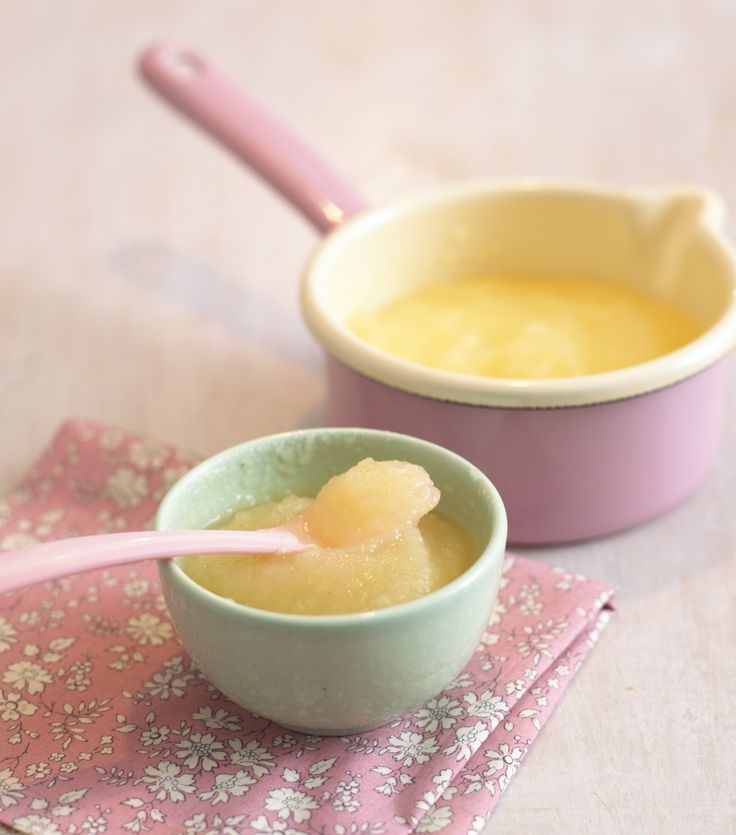 Nuts and Seeds
Nuts and SeedsAlmost all nuts and seeds are packed with fiber, and that’s great because you can switch things up with a different variety. Almonds have the most fiber, with over 3 grams in a single serving while peanuts have over 2 grams. If your child has nut allergies, you can try pumpkin seeds or sunflower seeds instead. Check out these recipes with nuts you can try:
- Dates and Nuts Cooker Cake
- Homemade Peanut Butter
- Mixed Nuts and Poha Laddu
- Pistachio and Raisin Coconut Cookies
- Homemade Almond Milk
- Almond Shortbread Cookies
- Dates Almond Milkshake
- No Bake Brownies with Dry Fruit
- No Cook Dry Fruit Modak
- Dry Fruit Jaggery Energy Bars
- Dry Fruit Balls
Here are some recipes with seeds:
- Baked Ragi Crackers with Sesame Seeds
- Dates Chia Seeds and Apricot Laddu
- Dates Sesame Seeds Laddu
Tips for feeding Kids High Fiber Foods:
- Switch your regular grain with whole grain, like replacing maida with atta, or white rice with brown rice
- Make sure there is a fruit and vegetable at every meal
- Opt for whole fruits instead of fruit juice
- Add dry fruits powder or nuts powder to cooked dishes or into batter, dough or smoothies
- Add fruit, nuts and seeds to yogurt, cereal or oatmeal
- Add vegetables like lettuce to sandwiches
- Ensure kids drink enough water along with high fiber foods
Add these high fiber foods for babies and toddlers to the child’s diet gradually, increasing the quantity slowly.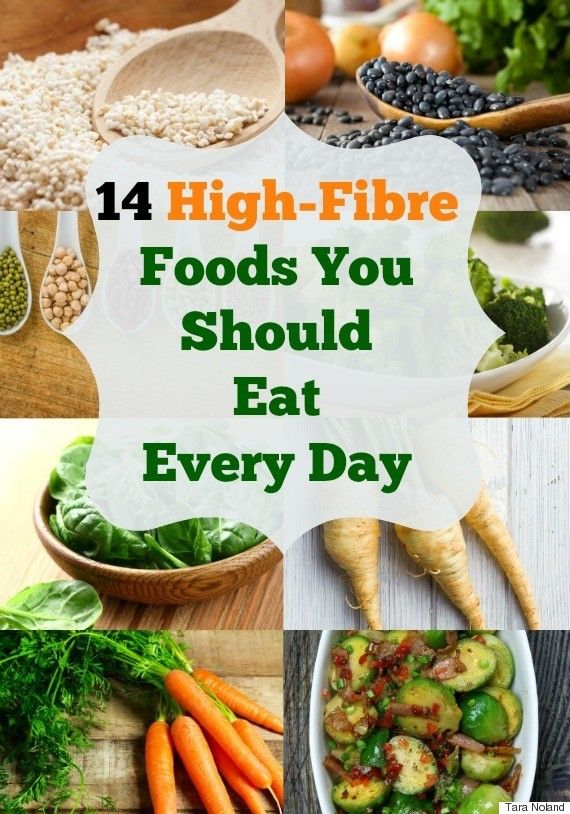 When introducing a new food for babies, always follow the 3-day rule. Too much fiber can cause bloating or gas as well as abdominal pain. When buying a food that claims to be high fiber, read the label carefully. Fiber is listed under ‘Total Carbohydrates’ as ‘Dietary Fiber’. A truly high fiber food should have at least 3 grams fiber per serving.
When introducing a new food for babies, always follow the 3-day rule. Too much fiber can cause bloating or gas as well as abdominal pain. When buying a food that claims to be high fiber, read the label carefully. Fiber is listed under ‘Total Carbohydrates’ as ‘Dietary Fiber’. A truly high fiber food should have at least 3 grams fiber per serving.
Please remember that the WHO recommends exclusive breastfeeding for the first six months, and there is no need of added fiber before that. If baby seems constipated during this time, it may help for the mother to eat some high fiber foods like prunes.
Frequently Asked Questions
What baby foods have the most fiber?
Oats, all fruits and vegetables have the most fiber in them.This article lists about 30 high fiber foods for babies.
How can I add more fiber to my baby’s diet?
Babies need about 55 to 110 grams of soft cooked high fiber vegetables a day. This article lists about 30 high fiber foods for babies.
Buy Healthy Nutritious Baby, Toddler food made by our own Doctor Mom !
Shop now!5 High Fiber Rich Foods For Babies
Fiber-rich foods and recipes for prevention and treatment of constipation.
Research-backed
MomJunction believes in providing reliable, research-backed information to you. As per our strong editorial policy requirements, we base our health articles on references (citations) taken from authority sites, international journals, and research studies. However, if you find any incongruencies, feel free to write to us.
Image: Shutterstock
Fiber is an essential nutrient that adds bulk to the stools and facilitates their smooth passage. Besides, it acts as a natural prebiotic that promotes good bacteria (probiotics) growth and supports gut health. Therefore, selecting age-appropriate high-fiber foods for babies is essential. Perhaps it is the reason that the American Dietetic Association (ADA) recommends people across age groups consume sufficient amounts of dietary fiber from various plant foods (1) (2).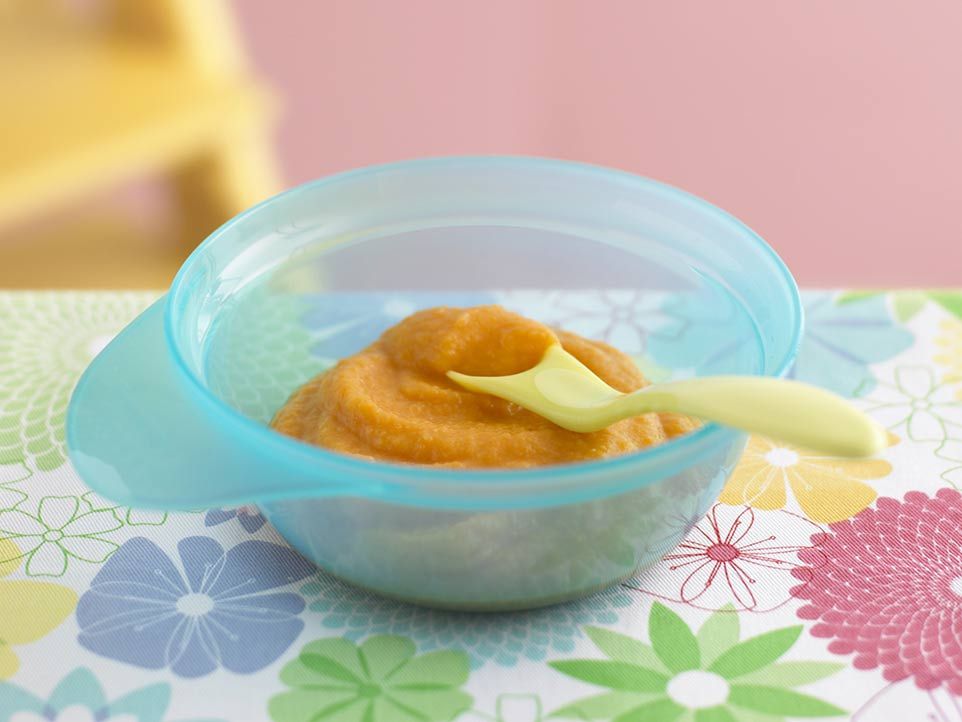
Scroll down to read more about dietary fiber and its possible benefits for babies, its side effects, and some high-fiber recipes you can feed to your baby. But before we dwell on details, let’s first understand the basics and learn some basic facts about fiber and its types.
Is Fiber Good For Babies?
Fiber is good for babies. The inclusion of dietary fiber in a baby’s diet can help enhance gut microflora and keep the digestive system healthy. Research suggests that the first years of life are crucial for establishing a healthy colonic microflora, as well as good eating habits (3). Thus, the intake of dietary fiber for babies is beneficial.
Dietary Fiber And Its Types
Dietary fiber or fiber is a type of complex carbohydrate found in plant foods (4). It cannot be easily digested in the small intestine, and this brings in the health benefits associated with it.
There are two forms of dietary fiber, soluble and insoluble. Most plant foods contain some amount of each type, which can provide specific health benefits.
Most plant foods contain some amount of each type, which can provide specific health benefits.
How Much Fiber Do Babies Need?
There are no clear guidelines on the recommended amount of dietary fiber for babies younger than one year (5) (6). Nutrition experts recommend five grams of fiber a day for children below the age of two years (7). It is best to consult a pediatric nutritionist to know about the ideal limit for your baby.
Uses Of Fiber For Babies
Fiber is an important part of an individual’s diet. It is helpful in the following ways for the baby:.
- Supports digestive health: Insoluble fiber, a type of dietary fiber present is whole grains, whole pulses, raw fruits, and vegetables is vital for maintaining digestive health. Upon ingestion, it swells up in the intestine by trapping water and adds bulk in the diet leading to smooth passage of stool. It helps prevent constipation, and supports the pH of the intestine, and prevents colonization of harmful microbes (8) (9).

- Good for gut microflora: The total dietary fiber, i.e., soluble and insoluble fiber, works as prebiotics or food for millions of probiotic bacteria living in the human gut. According to a research study published in the Journal of Cell Host and Microbe, the type, quality, and origin of food impacts the gut microbes (10).
- Strengthen immunity: Dietary fiber works as prebiotics and helps enhance immunity by increasing the population of beneficial microbes, such as lactic acid bacteria and bifidobacteria (11) (12). These bacteria could help fight harmful pathogens, and thus boost immunity.
- Supports absorption: A healthy gut harbors healthy microbiomes that assist in the proper digestion of food and absorption of nutrients (13) (14). Both these processes are vital for maintaining overall health and well-being.
- Improves appetite: Soluble fiber helps keep the tummy full.
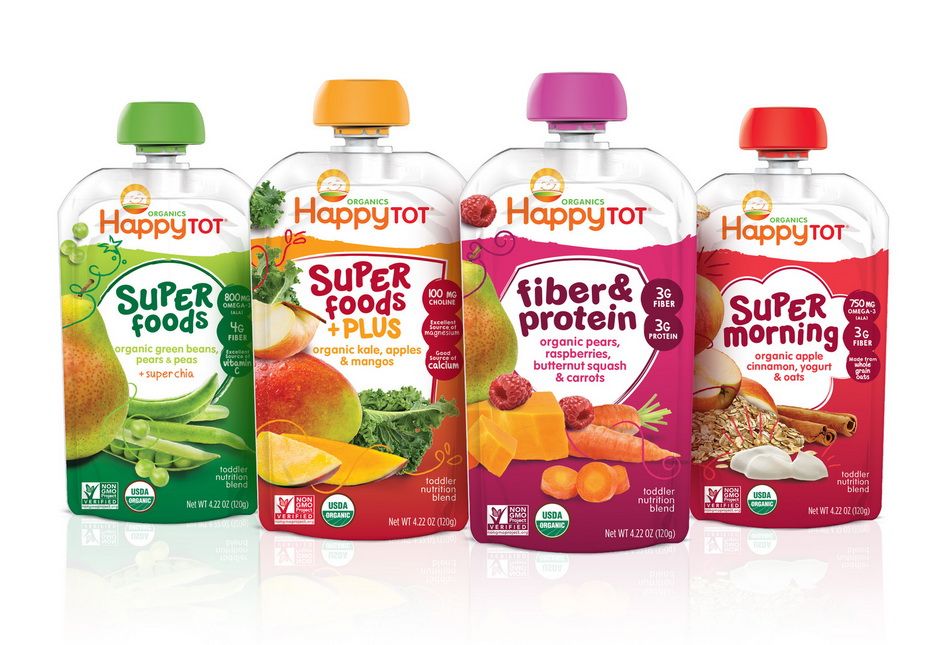 On consumption, it combines with water and forms a gel-like structure that delays gastric emptying. This mechanism increases the total amount of time the food stays in the gut and thus facilitates the sensation of satiety. It also helps in the secretion of appetite-regulating hormones within the gastrointestinal tract (15).
On consumption, it combines with water and forms a gel-like structure that delays gastric emptying. This mechanism increases the total amount of time the food stays in the gut and thus facilitates the sensation of satiety. It also helps in the secretion of appetite-regulating hormones within the gastrointestinal tract (15).
There are several sources of dietary fiber for babies. In the next section, we tell you about the fiber-rich foods you can feed your baby.
High Fiber Foods For Babies
A well-balanced, fiber-rich diet for a baby includes foods from the following food groups.
1. Grains (and cereals)
You can include cereals and grains in a baby’s diet as they begin eating solids. It will add variety in the meals and ensure the intake of fiber along with other vital nutrients. A few options that you can try are oatmeal, brown rice, barley, whole wheat, and maize. Besides, you can also try adding some pseudocereals such as quinoa, buckwheat, and amaranth (16).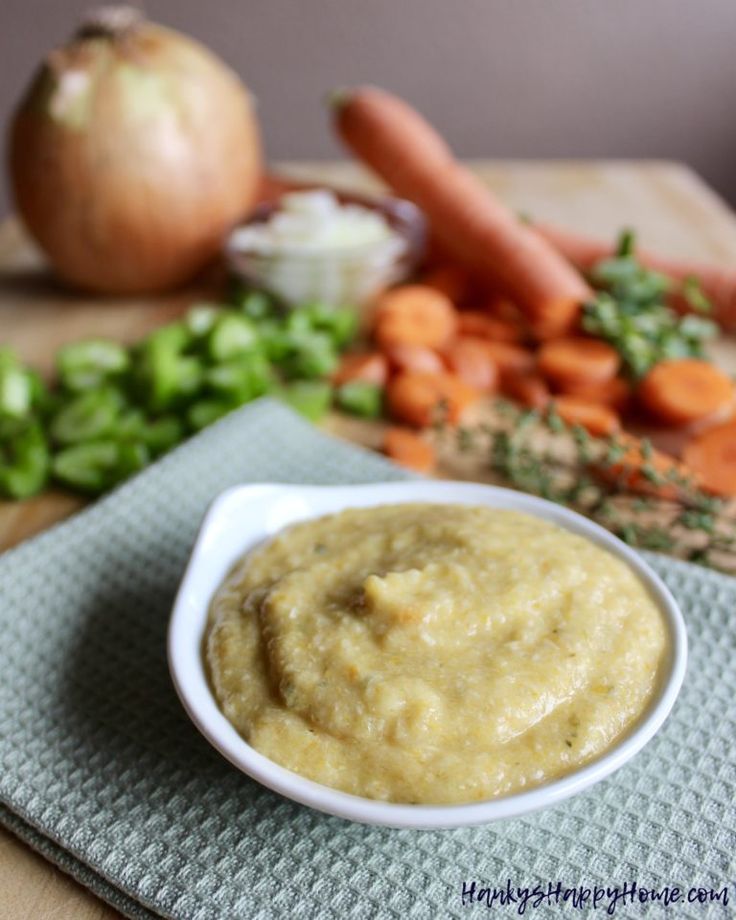
2. Vegetables
Babies can consume all vegetables pretty much at the onset of starting solids. Vegetables are a good source of micronutrients and dietary fiber. Besides, they are not high in simple carbohydrates. A few high-fiber vegetables that you could try for your baby are spinach, broccoli, beans, edamame, sweet potato, corn, and carrots. Give these vegetables in cooked and pureed form since babies might find it difficult to digest raw vegetables. Or if using the baby-led weaning approach to feeding, give the vegetables cooked until soft and cut into wedge-sized pieces for younger babies, or bite-sized pieces for older babies.
3. Fruits
Fruits contain dietary fiber and also several micronutrients. It is good to include at least one fruit a day in your baby’s diet. Some high-fiber fruits that you can consider are watermelon, muskmelon, apple, banana, strawberries, and blackberries.
4. Dried fruits
Dried fruits are potential choking hazards for babies around 6-12 months of age (17). But you can serve them in cooked and pureed form. Once your baby has started finger foods, you can cook dried fruits or chop them into small pieces to feed the baby. Some of the high-fiber options are prunes, apricots, dates, and figs.
But you can serve them in cooked and pureed form. Once your baby has started finger foods, you can cook dried fruits or chop them into small pieces to feed the baby. Some of the high-fiber options are prunes, apricots, dates, and figs.
5. Pulses and legumes
Pulses and legumes are considered a good source of protein and micronutrients like iron, potassium, and folate. However, they are also good sources of dietary fiber. Some options from this food group that you could include in your baby’s diet are horse gram, Bengal gram (whole), kidney beans, split peas, lentils, and chickpeas.
Possible Side-Effects Of Excessive Fiber Intake
People who consume fiber are less susceptible to chronic diseases (1). But you shouldn’t go overboard because it could have some adverse outcomes (18).
- High fiber and low water intake may lead to constipation or diarrhea.
- It might lead to a decrease in mineral absorption, which could be detrimental to the baby’s health.

- Consuming excessive fiber may cause flatulence, bloating, abdominal cramps, and nausea.
- It may cause a decrease in appetite in some cases and might lead to growth failure.
Precautions To Take While Introducing Fiber Foods To Babies
- Observe variety and moderation in the foods you give your baby.
- Start with a single grain (or cereal) for young babies. As the baby grows older, you can start multigrain meals.
- Minimize fiber loss by not peeling fruits and vegetables. Scrape them instead.
- Consult a pediatrician before starting a new fiber food for your baby.
- Water intake, along with fiber intake, is important. Fiber needs water to function (19). Offer small amounts of water (1-2oz) in an open cup with meals. Breast milk or formula are still the primary sources of nutrition for the entire first year, so make sure to give a milk feed an hour or so before offering solids to maintain hydration levels.

- Babies must have fiber from natural foods only. Avoid using isolated or commercial fiber.
Ways To Include High Fiber Foods In Baby’s Diet
The following are a few interesting recipes to include fiber in your baby’s diet.
For babies five to six months old
Babies at this age do not develop eating skills and digestive systems. So, the best way to introduce food to them is in the puree or mashed form. It ensures easy swallowing and digestibility.
For optimum fiber intake, vegetables like sweet potato, carrot, and green peas can be included in the diet. You can also include fruits like apple, banana, and raspberries.
1. Sweet Potato Puree
Image: Shutterstock
You will need:
- 1 sweet potato
- 1tsp extra virgin olive oil
- ¼tsp cumin (optional)
How to:
- Wash sweet potato in cold water and with a thin, bristled brush scrape its skin to remove dust and dirt from the surface.

- Once it is clean, dice the sweet potato into pieces of approximately two inches in size.
- Put these pieces into a pan and place the pan on a medium flame. Add enough water to cover the pieces and cover the lid of the pan.
- Let the pieces cook for 15-20 minutes. Check with a fork if the pieces are soft.
- Once done, put the pieces with water in a blender and blend until you get a smooth paste.
- Take another pan, pour oil in it, and place the pan on low flame.
- As the oil gets heated, add cumin. Once cumin starts to flutter, add the puree in the pan.
- Keep stirring the puree and cook for three to four minutes, and then your puree is ready to serve.
2. Banana Puree
Image: Shutterstock
You will need:
- 1 ripe banana
- 2-4tbsp water
How to:
1. Peel the banana and cut it into small pieces. Put these pieces into a blender to ensure no lumps are there.
2. Add water in the blender as per requirement and blend until you get a smooth puree.
3. Pour the puree in a cup, and it is ready to serve.
Note: You can add breast milk or formula milk instead of water to make these purees smoother.
For babies 6-12 months old
Babies in this age bracket usually progress from purees to finger foods. Since the baby’s digestive system is more mature now, you can include foods from different food groups.
3. Veggie Lentil Soup
Image: Shutterstock
You will need:
- 1 cup mixed lentils
- 1 cup diced vegetables (carrots, peas, corn, broccoli, onions, tomatoes, and zucchini)
- Parsley (chopped) – for garnishing
- Lemon juice (optional)
- 2tsp virgin olive oil
- ¼tsp black pepper powder
- Salt to taste
How to:
- Take a bowl, put lentils in it, and wash thoroughly for at least two to three times and keep it aside.
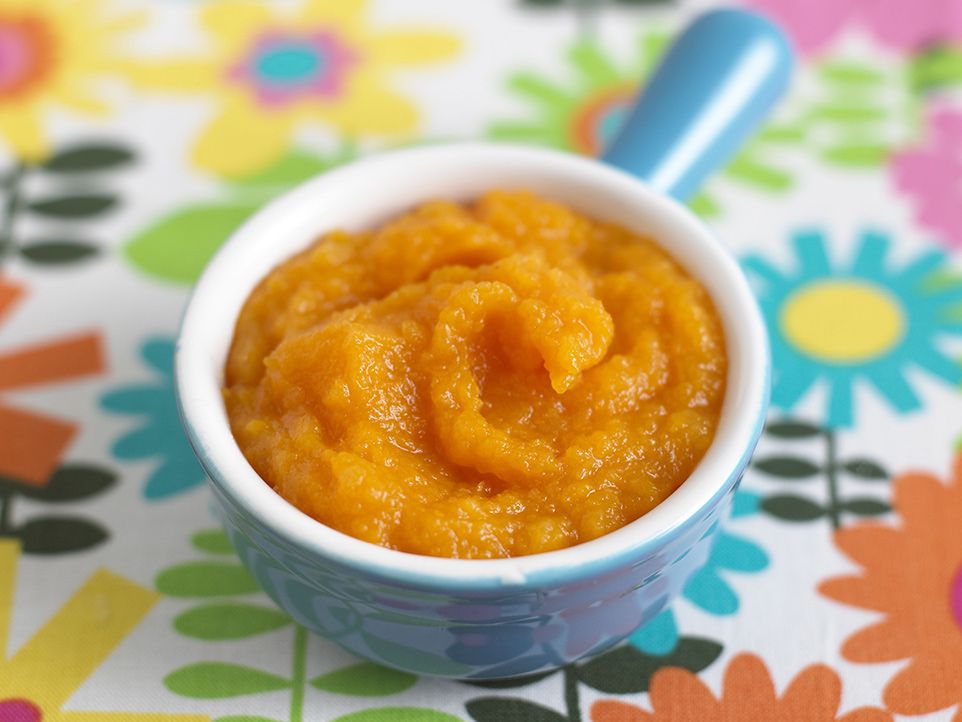
- Wash all the vegetables thoroughly in cold water. Clean them with a thin bristled brush to remove all the dust and dirt.
- Take another bowl, cut all the vegetables, and keep the bowl aside.
- Now, take an iron pot, and place it on medium flame. Pour oil in it, and as the oil gets hot, put onions in it.
- Fry the onions till golden brown, add all the vegetables in the pot, and then cook for five minutes.
- Add lentil mix in the pot and mix everything well.
- Pour water into the pot until the veggie and lentil mix gets covered. Place a lid and cover the pot
- Keep the pot on simmer and let the mix cook for 15 minutes. Check with a fork in between. If vegetables and lentils are soft, then switch off the flame.
- Once the mixture is cooked, you can transfer it into a bowl and mash it. If you want a thinner consistency, then you can also blend it.
- Add pepper powder, and lemon juice to taste and garnish with parsley. Your soup is ready to serve.

4. Yummy Roasted Vegetables
Image: iStock
You will need:
- 1 bowl of vegetable pieces (carrots, capsicum, corn, broccoli, onions, tomatoes, and zucchini)
- Lemon juice (optional)
- 2tsp virgin olive oil
- ¼tsp black pepper powder
How to:
- Wash all the vegetables thoroughly. Clean their skin with a thin, bristled brush to remove dust and dirt from the surface.
- Cut the vegetables into thin slices and place them on a roasting plate lined with baking sheet. Place the vegetables with gaps, avoid overlapping so that vegetables can get cooked evenly.
- Drizzle olive oil and sprinkle pepper.
- Preheat oven to 400°F (205°C). Place the vegetables in the oven and set the timer to 15 minutes.
- After 15 minutes, toss the vegetables and again set the oven for another ten minutes.
- Once done, place the vegetables on a serving plate and sprinkle lemon juice.
 Your yummy roasted vegetables are ready.
Your yummy roasted vegetables are ready.
1. Can babies have fiber supplements?
Babies should not have fiber supplements unless recommended by a pediatrician. Natural fiber from food is preferred to isolated or commercial fiber supplements, especially for babies. The natural sources of fiber, such as fruits, vegetables, and grains, contain several other vital nutrients that are not likely to be there in fiber supplements.
2. Is oatmeal for babies high in fiber?
Oatmeal is a rich source of fiber. It is made by processing oats grain, which is particularly rich in soluble fiber called beta-glucan. Beta-glucan has some potential health benefits for babies as well as adults. In terms of nutritional value, 100g of cooked oatmeal (cooked without fat) contains approximately 2.2g fiber.
Including fiber foods for babies could benefit them in many ways. Fiber is vital for promoting gut health, immunity, and the smooth elimination of stools. Moreover, several foods are rich in fiber and easy to incorporate into a baby’s meal. Cereals, fruits, and vegetables, including apple, banana, spinach, broccoli, and carrot, are some foods that may help meet your baby’s daily dietary fiber requirements when included in a properly cooked, age-appropriate manner. However, make sure you include fiber in your baby’s diet in moderation and through various foods.
Cereals, fruits, and vegetables, including apple, banana, spinach, broccoli, and carrot, are some foods that may help meet your baby’s daily dietary fiber requirements when included in a properly cooked, age-appropriate manner. However, make sure you include fiber in your baby’s diet in moderation and through various foods.
References:
MomJunction's articles are written after analyzing the research works of expert authors and institutions. Our references consist of resources established by authorities in their respective fields. You can learn more about the authenticity of the information we present in our editorial policy.
1. Position of the American Dietetic Association: Health Implications of Dietary Fiber; Science Direct
2. Devinder Dhingra et al.; Dietary fibre in foods: a review; National Center For Biotechnology Information
3. Edwards CA and Parrett AM; Dietary fiber in infancy and childhood; National Centre for Biotechnology Information (2003)
4. Types of Carbohydrates; Lane Community College
Types of Carbohydrates; Lane Community College
5. Eating, Diet, & Nutrition for Constipation in Children; Constipation in Children; National Institute of Diabetes and Digestive and Kidney Diseases; National Institute of Health
6. Dietary Reference Intakes: Macronutrients; National Academics
7. Alexandra Barrera; Baby Your Baby – Preventing Pediatric Constipation; Intermountain Moms; Intermountain Healthcare (2013)
8. Soluble vs. insoluble fiber; Medical Encyclopedia; Medline Plus (2018)
9. Dietary Fiber; Colorado State University (2018)
10. Makki K et al.; The Impact of Dietary Fiber on Gut Microbiota in Host Health and Disease; National Centre for Biotechnology Information (2003)
11. Schley PD and Field CJ; The immune-enhancing effects of dietary fibers and prebiotics.; National Centre for Biotechnology Information (2002)
12. Shokryazdan P et al.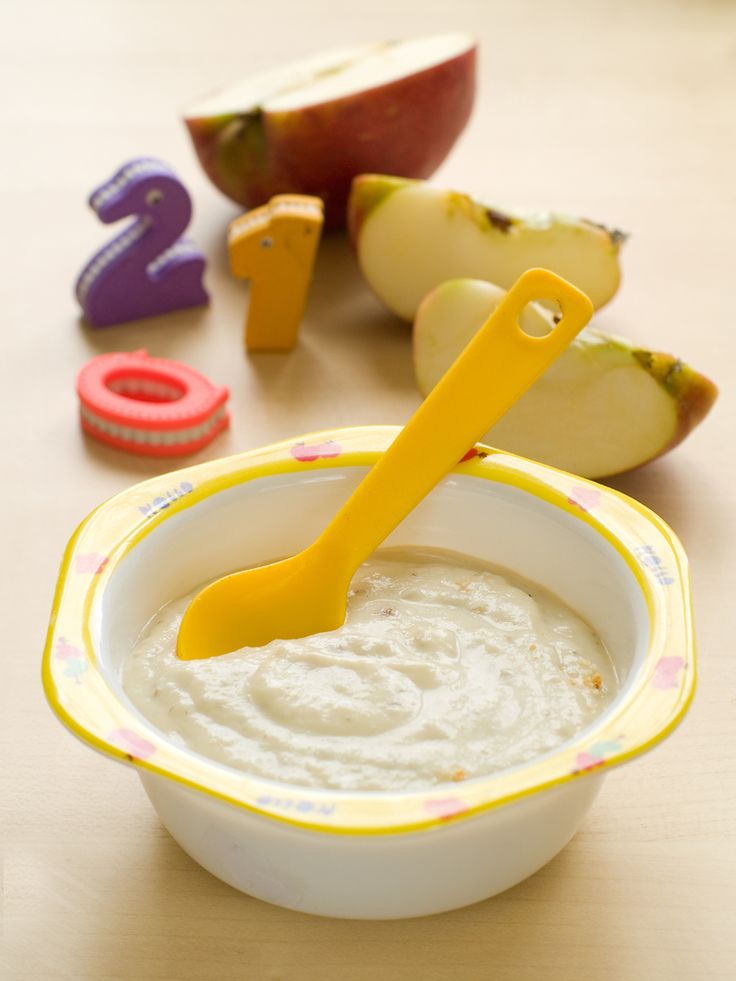 ; Effects of prebiotics on the immune system and cytokine expression.; National Centre for Biotechnology Information (2017)
; Effects of prebiotics on the immune system and cytokine expression.; National Centre for Biotechnology Information (2017)
13. Quigley EMM; Prebiotics and Probiotics in Digestive Health.; National Centre for Biotechnology Information (2019)
14. Paul O Sheridan et al.; Can prebiotics and probiotics improve therapeutic outcomes for undernourished individuals?; National Centre for Biotechnology Information (2014)
15. Candida J. Rebello et al.; Dietary fiber and satiety: the effects of oats on satiety; National Centre for Biotechnology Information (2016)
16. Choking Hazards; Centers For Disease Control And Prevention
17. Treatment for Constipation in Children; Constipation in Children; National Institute of Diabetes and Digestive and Kidney Diseases; National Institute of Health (2018)
18. How to Increase Volume in Your Meals; Post-Core: More Volume, Fewer Calories; Centre For Diseases Control and Prevention
19. Fiber How Much Is Too Much; Student Affairs; Duke Student Health Nutrition Services
Fiber How Much Is Too Much; Student Affairs; Duke Student Health Nutrition Services
The following two tabs change content below.
- Reviewer
- Author
Swati Patwal is a clinical nutritionist, a Certified Diabetes Educator (CDE) and a toddler mom with over eight years of experience in diverse fields of nutrition. She started her career as a CSR project coordinator for a healthy eating and active lifestyle project catering to school children. Then she worked as a nutrition faculty and clinical nutrition coach in different... more
Natasha Uspensky is a certified holistic nutrition counselor, Ayurvedic practitioner, wellness blogger, and founder of NU Health & Wellness and The Organic Beauty. She practices a holistic approach to wellness, believing that health and happiness come from achieving a sense of balance in all areas of life — from food, movement, and environment, to relationships, community, and career. She specializes... more
She specializes... more
Is It Safe To Eat Lotus Seeds (Makhana)..
Is It Safe To Eat Lotus Seeds (Makhana)..
Dry Fruits During Pregnancy: Benefits,..
Dry Fruits During Pregnancy: Benefits,..
Spinach For Babies: Right Age, Benefits..
Spinach For Babies: Right Age, Benefits..
Cinnamon For Babies: Safety, Benefits..
Cinnamon For Babies: Safety, Benefits..
Is It Safe To Consume Cinnamon During..
Is It Safe To Consume Cinnamon During..
Top 10 Food Ideas For Your 16 Months..
Top 10 Food Ideas For Your 16 Months..
4 Possible Health Benefits Of..
4 Possible Health Benefits Of..
ORS for Babies: Dosage, Benefits And..
ORS for Babies: Dosage, Benefits And..
13 Excellent Benefits Of Avocados..
13 Excellent Benefits Of Avocados..
The 20 Delicious Sources of Fiber
Contents1.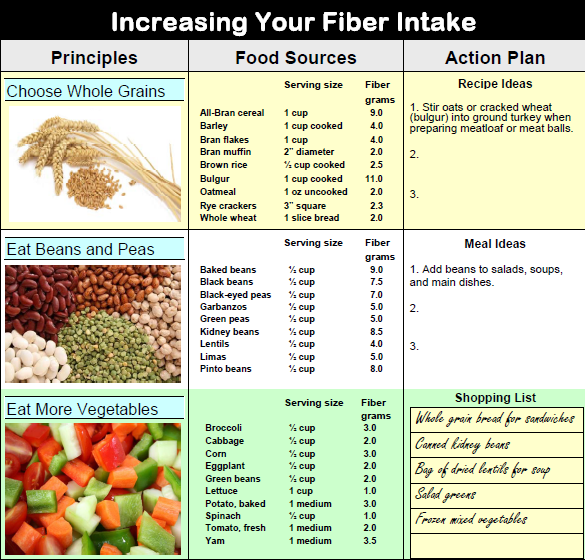 white bean 2. Chia seeds 3. Dried peas 4. Lentils5. Raspberry6. Pumpkin7. Blackberry8. Green peas9. Flax seeds 10. Pasternak11. Apple12. Pear13. Pomegranate seeds 14. Broccoli15. Bran16. Oatmeal17. Whole grain pasta18. Almond 19. Potato20. Barley
white bean 2. Chia seeds 3. Dried peas 4. Lentils5. Raspberry6. Pumpkin7. Blackberry8. Green peas9. Flax seeds 10. Pasternak11. Apple12. Pear13. Pomegranate seeds 14. Broccoli15. Bran16. Oatmeal17. Whole grain pasta18. Almond 19. Potato20. Barley
Photo: Medaboutme.ruMedaboutme.ru
Most people eat only 15 grams of fiber per day. And this is too little for us to be slim, healthy and beautiful.
Video of the day
One of the most common causes of weight gain is an unbalanced diet and, as a result, problems in the gastrointestinal tract. Recent studies by scientists show that a diet low in fiber increases the likelihood of developing appendicitis, colon and breast cancer, and many other diseases.
The American Dietetic Association, with which other world-class organizations stand in solidarity, calls for a daily intake of 20-35 grams of fiber. And MedAboutMe tells where to get this useful substance so that it is tasty and varied.
1. White beans
Beans are one of the best sources of fiber today. Hearty, tasty, healthy, goes well with many products and can be used to prepare first and second courses, as well as desserts. One serving of boiled beans has 9.6 g of fiber! And this is 34% of the daily requirement!
Hearty, tasty, healthy, goes well with many products and can be used to prepare first and second courses, as well as desserts. One serving of boiled beans has 9.6 g of fiber! And this is 34% of the daily requirement!
Scientific fact!
According to researchers from Harvard University, 10 g of fiber consumed daily reduces the risk of breast cancer by as much as 7%!
2. Chia seeds
A popular ingredient in weight loss diets and a recognized superfood, chia seeds are not just a useful addition to the menu, but also a great decoration for many dishes. Chia seeds can be added to smoothies and salads, put in yogurt, or garnished with pastries and cakes. In one tablespoon of seeds - up to 5 g of valuable fiber!
3. Dried peas
Who doesn't love classic pea soup? This simple dish is the first aid for digestive problems, as well as a great option for a diet. And how nutritious pea porridge is, it is not for nothing that it is included in the menu of the military in different countries of the world (for example, in Russia and Germany)! One serving of porridge contains 8. 1 g of fiber.
1 g of fiber.
Did you know?
"Father of Medicine" - Hippocrates was one of the first physicians to instruct his patients to consume fiber. It was necessary to receive it along with bran. According to the doctor, this helped keep the intestines healthy.
4. Lentils
Legumes are an excellent source of nutrition rich in protein and fiber. They are a must for vegetarians, but meat eaters also like them. If you like to cook lentil soup, you should know - in one serving of an unassuming dish - up to 16 g of fiber!
5. Raspberry
One of the richest fruits in antioxidants, ripe raspberries are perfect for children's menus. But not only kids love it. Sweet and juicy berries add weight loss to morning oatmeal, cook compote and jelly on their basis, and prepare pies. But the most useful raspberries are fresh. One cup contains 8 g of fiber.
6. Pumpkin
Bright sunny vegetable that ripens at the end of summer, but can please the household with delicious dishes all year round, contains a lot of fiber. So, in a cup of baked pumpkin slices - as much as 6.6 g. Fresh pumpkin can be used to make cereals and casseroles, and smoothie lovers can supplement their favorite recipes with it.
So, in a cup of baked pumpkin slices - as much as 6.6 g. Fresh pumpkin can be used to make cereals and casseroles, and smoothie lovers can supplement their favorite recipes with it.
Scientific fact!
According to a study published in The American Journal of Clinical Nutrition, a high-fiber diet lowers blood levels of "bad" cholesterol.
7. Blackberries
Dark blackberries, just like raspberries, contain up to 8 g of fiber per cup. Interestingly, strawberries and blueberries only boast half of the amount of fiber listed.
8. Green peas
Small bright green beads will enrich the body with high quality protein and fiber. One cup of green peas contains 7.2 g of fiber and 8 g of protein. Peas are best consumed fresh, but canned beans are also beneficial.
Note!
If we compare the diet of modern man and 100 years ago, fat, sugar and meat used to account for only 15% of the total calories in the diet. Today, this figure is approaching a record 60%.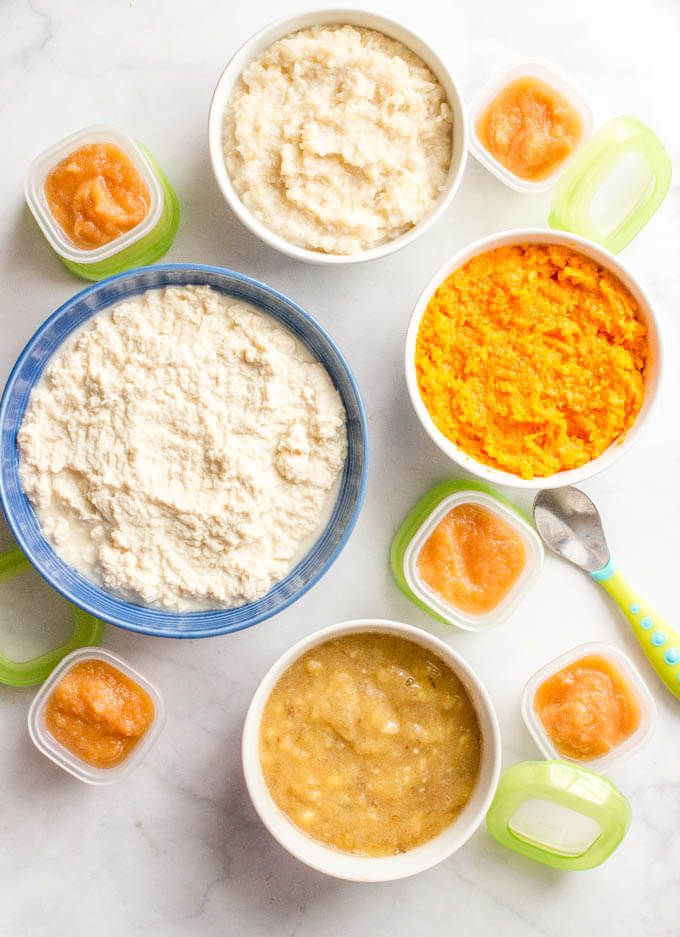 Moreover, the amount of fiber in the menu has decreased by as much as 90%!
Moreover, the amount of fiber in the menu has decreased by as much as 90%!
9. Flax seeds
Another superfood in our selection! Two handfuls of flaxseeds, which can be added to meals in the same way as chia seeds, will enrich the body with 7 g of fiber.
10. Pasternak
This root crop is little known to the Russian consumer, but why not include it in the daily menu? One cup of sliced parsnips has up to 7 grams of fiber! Add the root vegetable to a vegetable stew for a spicier flavor, or try roasting potatoes with it. So a very high-calorie dish, at least, will be easier to digest.
11. Apple
An English proverb says: "Eat one apple a day and you won't need a doctor." And this saying makes sense! Such a healthy fruit is replete with vitamins and antioxidants, scientists consider it one of the most useful foods for women. One medium fruit, eaten with the skin on, contains 4.4 grams of fiber.
Scientific fact!
A 20-year study of 34,000 women found that apples are one of three foods that reduce the risk of death from coronary heart disease and cardiovascular disease.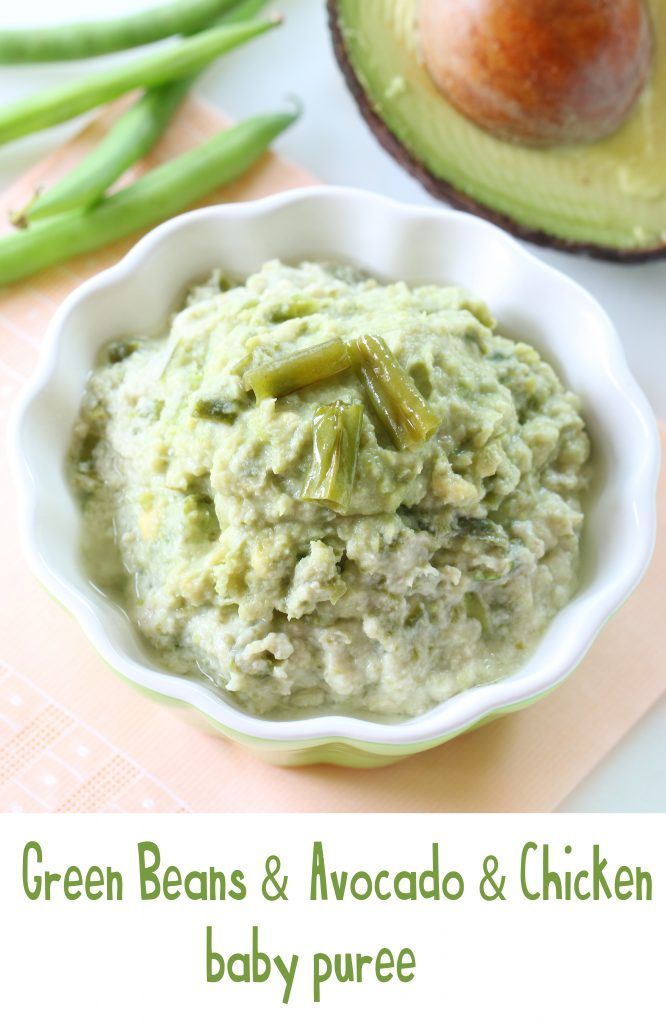 Women who ate apples had less belly fat and lower blood pressure than those who avoided the product.
Women who ate apples had less belly fat and lower blood pressure than those who avoided the product.
12. Pear
One medium pear will provide the body with 5.5 g of fiber. However, to get this amount, it must be eaten whole - along with the peel. It is in the peel of fruits that the most valuable substances for health are concentrated.
13. Pomegranate Seeds
Research shows that pomegranate seeds contain powerful antioxidant polyphenols, one of the properties of which is to stimulate active fat burning. In addition, pomegranate is a fiber-filled superfood. In 100 g of seeds - up to 5 g of fiber!
14. Broccoli
This variety of cabbage is ideal for a hearty yet light dinner. It can be cooked in batter with your favorite spices or simply baked in the oven. One cup of stewed cabbage has up to 5 g of fiber.
Did you know?
Fruit and vegetable juices have much less fiber than whole fruits. This is because the peel is cut off before juicing.
15. Bran
If you need to diversify your menu with fiber, then they often start with them. Bran is also recommended by many nutritionists. So, they are an obligatory component of the diet of Pierre Dukan. And there is a reason! For example, in wheat bran up to 50% of the volume is insoluble fiber.
16. Oatmeal
Whoever starts the day with oatmeal is acting wisely! In one serving of oatmeal, cooked not from a bag of "Quick porridge", but boiled in water, there are 70 calories and about 4 g of fiber. If you supplement the portion with slices of fresh fruits or berries, the amount of fiber can be at least doubled!
Scientific fact!
The American edition of the Nutrition Journal published the results of a study according to which, in the participants of the experiment, who consumed oatmeal every day, there was a rapid decrease in the level of "bad" cholesterol in the blood, as well as a trend towards a decrease in waist circumference.
17. Whole grain pasta
Whole grain pasta
Not all pasta is created equal. Some of them are beneficial for both health and figure. For example, whole grain products are a great garnish option, the fiber content of which varies from brand to brand. On average, one serving of whole grain pasta contains 6.3 g of fiber.
18. Almonds
Perhaps this is the best option for a snack! It is useful to keep it in a bag or desktop drawer. Nuts will also energize and help you not gain weight from sedentary work, minimizing unplanned outbreaks of hunger and, accordingly, snacking. Roasted almonds contain 4.5 g of fiber per 100g.
Note!
Too little fiber is bad, but too much is not good. If a person eats more than 50 g of fiber every day, he may experience abdominal pain, bloating, and diarrhea.
19. Potatoes
This amazing product, unfairly condemned by weight loss and some nutritionists, is a healthy source of fiber and a great healthy lunch option. After all, potatoes are not “bad” in and of themselves! A set of extra pounds contributes to the abundance of this vegetable on the menu and the wrong ways to cook it. In one medium potato, baked with the skin on, there are only 70 kcal and as much as 4 g of healthy fiber.
In one medium potato, baked with the skin on, there are only 70 kcal and as much as 4 g of healthy fiber.
20. Barley
One cup of barley porridge does not contain as much fiber as other products in our rating, but it can become the basis of a healthy menu, which will bring many benefits to the body. One serving of barley contains 3 g of fiber, as well as many vitamins and minerals, including vitamins A, E and group B, as well as zinc, calcium, iron, phosphorus and other useful substances.
Expert comment Rukhshana Valerievna Neupokoeva, doctor of the highest category, nutritionist, cardiologist
Fiber is the main element of our youth and longevity. A sufficient amount of fiber in the diet has only a positive effect on health. A person needs 20-30 grams of fiber per day.
There are two main types of fiber: soluble and insoluble. Soluble fiber our body is able to digest with the help of enzymes to a jelly-like consistency, the most famous are pectin, gum, fructans. Pectin is found in fruit pulp, berries, they abound in carrots, cauliflower, citrus fruits, and potatoes. There is a lot of gum in oatmeal. Fructans are found in grains of wheat and barley, Jerusalem artichoke.
Pectin is found in fruit pulp, berries, they abound in carrots, cauliflower, citrus fruits, and potatoes. There is a lot of gum in oatmeal. Fructans are found in grains of wheat and barley, Jerusalem artichoke.
This fiber helps us to keep feeling full for a long time, while we can comfortably lose weight without feeling hungry; reduces the concentration of "bad" cholesterol in the blood, reducing risk factors for the development of cardiovascular diseases; normalizes blood glucose levels, which has a great effect on people with diabetes and a predisposition to obesity.
Insoluble fiber or cellulose and lignin, retain their structure at all stages of digestion, creating proper peristalsis and important intestinal immunity, helps to eliminate toxins from the body, supports daily bowel movements. Products containing insoluble fiber: the peel of fruits and vegetables, nuts, cereals, herbs, legumes.
Expert comment Natalya Fadeeva, MD, dietitian, endocrinologist
Fiber is an indigestible plant fiber that is found in all foods of plant origin (cereals, vegetables, fruits, berries, herbs). It is best to get it from these sources. Fiber is also found in mushrooms and legumes, but in this case, these products are not recommended for all population groups, because. are indigestible and can provoke exacerbations of diseases of the digestive system.
It is best to get it from these sources. Fiber is also found in mushrooms and legumes, but in this case, these products are not recommended for all population groups, because. are indigestible and can provoke exacerbations of diseases of the digestive system.
Fiber is a broom for the intestines, contributes to its regular emptying and prevention of constipation, colon cancer. Removes toxic substances from the intestines. Enriches the body with B vitamins, which are produced by beneficial bacteria that live in the large intestine and use fiber for food.
Take the test Do you follow the rules of a healthy diet? Do you know the principles of healthy eating? Take the test and find out the whole truth about your diet!
Shutterstock photo materials used
Homemade baby puree: recipes
Homemade fruit and vegetable puree: cooking secrets
Vegetable and fruit puree is often the first meal of the baby after breast milk or formula, so many mothers prefer to cook it on their own. Although modern manufacturers convince us that baby food is devoid of preservatives and harmful additives, fresh vegetables and fruits are much healthier, especially when it comes to infant nutrition. Yes, and cooking baby puree at home is not so difficult.
Although modern manufacturers convince us that baby food is devoid of preservatives and harmful additives, fresh vegetables and fruits are much healthier, especially when it comes to infant nutrition. Yes, and cooking baby puree at home is not so difficult.
Vegetables or fruits?
Let's try to make baby puree for our beloved baby. Despite the fact that pediatricians of the last century recommended starting complementary foods with fruits, it is better to first introduce the child to vegetables - modern doctors and nutritionists have come to this conclusion. Boiled vegetables do not irritate the gastrointestinal tract, are better absorbed, satisfy hunger, do not cause allergies and increased gas formation. In addition, vegetables do not contain fructose, which irritates the pancreas. And one more weighty argument in favor of the fact that it is better to start with vegetables - fruits are tastier, and if the baby tries them first, he will refuse vegetables, because they will seem to him more insipid.
How to prepare baby vegetable puree
What can baby puree be made from? The ideal puree for the first feeding is from cauliflower or zucchini. A little later, you can introduce pumpkin, broccoli, carrots, potatoes and green peas. Before cooking, vegetables are washed well, peeled, cut into pieces and cooked - steamed, in the oven or in the usual way, in water. The first two methods are preferable because oven roasting and steaming preserve the vitamins, minerals, nutrients, and natural color in the vegetables. And most importantly - such vegetables are much tastier. Some nutritionists recommend boiling vegetables with their skins on before peeling them, so choose your own cooking method.
If you do have to cook vegetables in a saucepan, use an enamel pot, add less water and dip the vegetables into boiling water. Boil until soft, but do not overcook vegetables and fruits, otherwise they will become tasteless and lose a lot of vitamins. Ready vegetables are chopped with a blender until smooth and slightly diluted with water, vegetable broth, breast milk or mixture to a gruel state, since the child does not yet know how to digest thick food. Small pieces of vegetables in puree sometimes cause the baby to refuse to eat, so the knives in the blender should be well sharpened, and if there is no technique, you can grind the vegetables through a sieve. Salt and spices are usually not added to baby vegetable puree, and if the baby is more than 6 months old, you can put a little butter in the puree.
Small pieces of vegetables in puree sometimes cause the baby to refuse to eat, so the knives in the blender should be well sharpened, and if there is no technique, you can grind the vegetables through a sieve. Salt and spices are usually not added to baby vegetable puree, and if the baby is more than 6 months old, you can put a little butter in the puree.
A few rules for making baby puree at home
- Use only fresh vegetables and fruits.
- Water for cooking vegetables must be filtered or bottled.
- If you are using frozen foods, choose only whole fruits and vegetables as they retain the most nutrients.
- All utensils for preparing baby food should be perfectly clean, so if the knife falls on the floor, it should be washed well. Also, the presence of pets in the kitchen during the cooking process is not allowed.
- Avoid high-nitrate vegetables and fruits such as spinach, lettuce, beetroot, melon, and watermelon in infants' diets.

- Store-bought vegetables are recommended to be soaked in water to remove nitrates: 1-2 hours for this, up to 24 hours for potatoes.
- Mix sour-tasting fruits and berries with sweet fruits - for example, blackcurrant goes well with banana or pear. Sour puree is unlikely to please the baby.
- Give your child only fresh food, and it is better to eat yesterday's puree from the refrigerator yourself.
Handmade fruit puree for children
Children are more likely to eat fruit puree because fruits are tastier and sweeter. Fruits contain a large amount of vitamins, minerals, trace elements, fiber and antioxidants, so they are very useful for a growing body. However, fruits are strong allergens, especially berries, bananas, pomegranates and apricots, so they should be given with caution, watching the child's reaction. The most low-allergenic fruits are apples and pears, so it is better to start complementary foods with them, and then introduce all other fruits. First, the baby is fed with a one-component puree made from only one product, and then you can mix different vegetables and fruits, and not only among themselves. Very tasty combinations of fruits and vegetables, such as apples and zucchini, pumpkins and pears.
First, the baby is fed with a one-component puree made from only one product, and then you can mix different vegetables and fruits, and not only among themselves. Very tasty combinations of fruits and vegetables, such as apples and zucchini, pumpkins and pears.
Fruit must be of good quality, without damage, ripe and juicy, and the rules for preparing fruits do not differ from the rules for cooking vegetables. Naturally, fruit puree is not sweetened with honey and sugar - the later the child learns the taste of sugar, the stronger his health will be.
Aromatic pumpkin puree
Babies enjoy eating pumpkin because of its pleasant sweetish taste, besides pumpkin is very healthy. It contains a whole storehouse of various vitamins, including vitamin T, which normalizes the metabolism in the body. For pumpkin puree, small pumpkins are suitable, since large fruits are not as tasty and difficult to peel.
Cut the pumpkin in half, and then into small pieces, one or two of which (depending on the appetite of the crumbs) cut into cubes.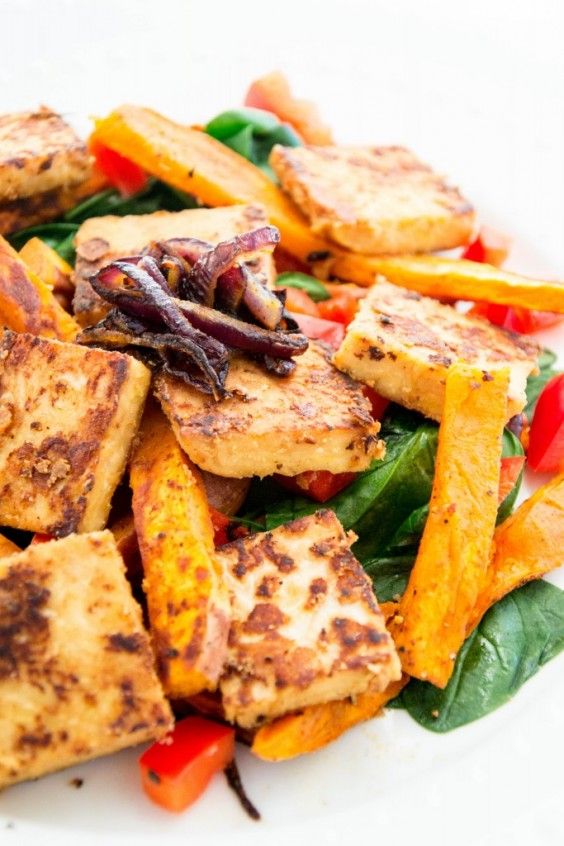 Boil the pumpkin in a double boiler or in water for 20 minutes, while warm, beat with a blender to a smooth puree and dilute if necessary with water or a mixture. Add oil and salt depending on the age of the child.
Boil the pumpkin in a double boiler or in water for 20 minutes, while warm, beat with a blender to a smooth puree and dilute if necessary with water or a mixture. Add oil and salt depending on the age of the child.
Gentle Broccoli Puree
One of my favorite homemade baby puree recipes is broccoli. This cabbage is extremely useful because it contains potassium, iron, calcium and other valuable substances. It has much more vitamin C than lemon, and the reason for its nutritional value is its high protein content.
Separate the broccoli into florets, wash thoroughly and steam for 20 minutes. Cabbage cooks faster in water - fresh broccoli will take 7 minutes, and frozen - about 15 minutes. Broccoli puree does not need much water, it should lightly coat the vegetables. After the cabbage becomes soft, chop it in a blender or pass through a sieve. If you're mashing for kids older than a year old, be sure to add butter - the little ones will gobble up broccoli on both cheeks!
How to make baby pear puree at home
Pear is a very delicate, tasty and healthy fruit that rarely causes intolerance. In addition to the high vitamin value, the pear has other beneficial properties - it facilitates digestion and removes toxins from the body.
In addition to the high vitamin value, the pear has other beneficial properties - it facilitates digestion and removes toxins from the body.
For baby food, choose green pears to reduce the risk of allergies, which are rare among babies. Peel the fruits from the peel and core with seeds, and then stew the pear in a bowl with a thick bottom in a small amount of water for 15 minutes. Let the pear cool slightly and puree it in a blender with a little of the remaining pear broth. For large kids, fruits can not be boiled, but add half a teaspoon of natural honey to the puree.
Zucchini and apple puree
Little gourmets will love this delicious puree, besides, zucchini is considered the most hypoallergenic vegetables, which, due to their high potassium content, have a beneficial effect on the heart. Apples contain iodine, iron and phosphorus, and due to the high concentration of vitamin C, apples help in the prevention of colds and viral infections.
Wash the zucchini and apples well, de-seed them, cut into pieces and cook in a pot for about 20 minutes, considering that the zucchini will cook 5 minutes faster. By the way, apples are steamed for 15 minutes, zucchini - 10 minutes. Next, vegetables and fruits are chopped in a blender, mixed and brought to a boil. For allergic children, this is the best side dish!
By the way, apples are steamed for 15 minutes, zucchini - 10 minutes. Next, vegetables and fruits are chopped in a blender, mixed and brought to a boil. For allergic children, this is the best side dish!
Exotic mango
Sometimes you can pamper your baby with exotic fruits - for example, make mango puree. This is a very delicate fruit with an original taste, containing 12 amino acids and improving sleep.
Choose only ripe fruits that are soft and red-yellow in color. Peel the mango from a thick skin and a large bone, put the pulp in a blender, add 2 tbsp. l. water and mash it, and then heat it in a saucepan for several minutes. For a baby up to a year old, it is better to give mashed potatoes with heat treatment to facilitate digestion, and older children can be fed raw mangoes.
Carrot-Potato Puree
Make normal potato puree without oil. Peel the carrots, grate them and stew them with butter and vegetable broth - about 1 tsp is required for 200 g of carrots. butter and 150 g of broth. When the carrot becomes very soft, wipe it through a sieve, and then put it on a plate, put mashed potatoes on the second half. Let the child choose whether to mix two types of puree for him or eat separately!
butter and 150 g of broth. When the carrot becomes very soft, wipe it through a sieve, and then put it on a plate, put mashed potatoes on the second half. Let the child choose whether to mix two types of puree for him or eat separately!
Pumpkin and apple puree
This sweet, sugar-free pumpkin-apple puree, cooked in a double boiler, is suitable for children who are already accustomed to “adult” food and are able to perceive a new unusual dish. It is better to take a pumpkin with a gray or green skin and with bright pulp - such fruits contain more vitamins and other useful substances. Apples are green because they have fewer allergens.
Cut pumpkin and apple flesh without peel and seeds into pieces, place in a double boiler and cook for 20 minutes. Grind pumpkin, apples and raisins in a blender or by hand with a pusher if the child has already learned to chew. They say that this puree is very good for skin and hair, and you can check the truth of this statement yourself if you start feeding this dish to your baby.